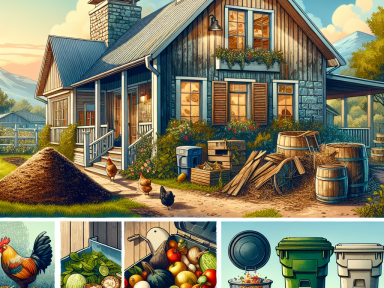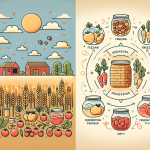How Waste Reduction and Recycling can Enhance your Homestead’s Sustainability
Achieving self-reliance and sustainability on your homestead is a rewarding feat, but did you know that reducing waste and recycling can drastically enhance your progress and safeguard your means of survival? Imposing mountains of waste and the excessive energy it takes to manage them are amongst the greatest threats to our environment today. But, as a homesteader, you have the power to change this narrative right on your doorstep.
Solid Waste Management: a Homesteading Nightmare?
The average American generates around 4.9 pounds of waste every single day, and it all goes somewhere: landfills, incinerators, or worse, the natural environment. Imagine the levels of waste your homestead might accumulate, especially if you’re taking on large-scale food production. Without proper management, you’re looking at severe pollution and potential disease risks – a homesteading nightmare!
Enter Waste Reduction and Recycling: The Direct Path to Self-sustainability
The solution lies in managing your own waste effectively and sustainably, enhancing your self-reliance and the health of your homestead.
1. Composting Kitchen and Garden Residue
Turning kitchen scraps, garden waste, and even cardboard into rich compost is nature’s way of recycling. This gold mine improves your garden soil, reducing the need for chemical fertilizers while saving money. Plus, composting cuts down the waste that might have ended up in the landfill.
2. Reusing and Repurposing Items
Before throwing anything away, always consider if it can serve another purpose. An old jar could become a new flower pot, a leaky bucket might be repurposed into a planter, or an unwanted pallet can be used for building a compost bin.
3. Recycling Unavoidable Waste
While we should work to reduce our waste, some items like glass, metals, and certain plastics are unavoidable. But many of these materials are recyclable, and local recycling programs often accept them.
4. Feeding Leftovers to Livestock
Got chickens or pigs on your homestead? Any safe, non-moldy food waste can become nutrient-rich meals for your livestock. But remember to read up on what your animals can and cannot eat!
Embrace the Challenge
Waste reduction and recycling can seem overwhelming, perhaps even frightening. It’s a step out of the comfort zone for most, but homesteading is all about embracing challenges and seeking solutions. With commitment and effort, you can turn your waste into worth and step closer towards a prosperous, sustainable homestead.
The Fight for Survival Starts at Home
In an ever-dangerous world – ravaged by climate change, pollution, and overexploitation of resources – the fight for survival starts at home. Taking responsibility for your waste can help avert these global crises. More than that, it brings you one step closer to the self-reliant, sustainable lifestyle you aspire to achieve. The choice is yours: face the threat of an unchecked waste problem, or harness the potential of beneficial waste management. Choose wisely, for your survival – and that of your homestead – depends on it.




GIPHY App Key not set. Please check settings